- Dec 16
- Drug Addiction Treatment
Athletes of all ages feel the drive to succeed with pressure from both internal and external sources. All types of athletic competition — especially in professional sports — require mental and physical toughness beyond that of the average person. Between the intense scrutiny of the consumer market and the coaches and families who dedicate their lives to supporting a person’s career, athletes are subject to immense pressure from all sides. As a result, drug misuse in sports is, unfortunately, common.
Although many people look up to athletes and enjoy the results of their labor, people who participate in organized sports at any level face unique challenges in terms of substance misuse and addiction. Understanding why and how athletes’ drug misuse occurs is critical in preventing addiction and treating it in those already struggling.
- Why Athletes Are at Risk for Substance Misuse
- A Culture of “Doing Whatever It Takes”
- Performance-Enhancing Drugs and Addiction
- A High-Profile Case of Anabolic Addiction
- Rates of Recreational Drug Abuse Among Athletes
- Addiction Following Sports Injuries
- Athletes Suffering in Silence
- The Role of Mental Health in Athlete Addiction
- Treatment Options for Addicted Athletes
- How to Help an Addicted Athlete Seek Treatment
- Treatment for Athletes at Gateway
 Why Athletes Are at Risk for Substance Misuse
Why Athletes Are at Risk for Substance Misuse
Participating in sports can be an intensely positive experience that improves the mind and body in numerous ways. Regular exercise benefits mental health in the general population, but many additional factors present in organized sports can negate that benefit and worsen mental health.
There is slim shelter from the constant, intense pressure to perform better in any competitive sport, get faster, and become stronger. In combination with everyday responsibilities like childcare, school, or work, the resulting stress can lead athletes to try various substances attempting to increase their performance or reduce their response to stressors.
A Culture of “Doing Whatever It Takes”
Many people who participate in athletics find that their self-esteem and identity become wrapped up in their ability to perform well. Those in contact sports like a football game knowing that they could get severely injured or develop long-term health problems, but their passion for the sport keeps them playing. It’s common to hear athletes talking about “playing through the pain” and putting the competition before anything else. It can be a significant contributor to drug use in professional sports.
As a result of pressure to maintain and improve sports performance, one of the most common forms of drug use in professional sports is performance-enhancing drugs (PEDs). The category of PEDs includes:
- Anabolic steroids
- Hormone and metabolic modulators
- Growth hormones
- Beta-2 agonists
- Glucocorticoids
- Beta-blockers
- Diuretics
This practice of drug use in sports isn’t new. The use of performance-enhancing drugs, also known as doping, dates back to the first Olympic games in ancient Greece. Back then, the substances of choice included things like sheep testicles. These organs contain testosterone, one of the ingredients used in the creation of PEDs today.
Athletes accused of doping in ancient Greece were punished, much as they are today. Officials banned them from the game, and they carved their names on stone tablets that lined the paths into the stadium — kind of a medieval hall of shame. These tablets also stood under bronze statues of Zeus, the king of the Greek gods, to punish anyone who would dare violate the rules of the games.
The problem of athletes using PEDs became such a problem in 1999 that the World Anti-Doping Agency (WADA) began to put restrictions on specific substances to fight back against the rising tide of “doping.” Today, the WADA prohibited substance list contains hundreds of individual drugs that fit into the categories listed above. The drugs have earned prohibited status because they unnaturally enhance performance, pose a health risk to the athlete and violate “the spirit of the game.”
Performance-Enhancing Drugs and Addiction
Many people, including athletes, don’t realize PEDs can be addictive. They assume that because the drugs don’t necessarily produce any euphoria, they don’t have any addictive potential. However, the often extreme motivation that drives sportspeople to try performance-enhancing drugs makes it easier to become addicted to their effects, despite the adverse effects of drugs in sport.
Anabolic steroids, the best-known PEDs, are a common denominator in the lives of athletes who ruined their careers with drugs. These drugs can produce significant increases in muscle mass and enhance strength, but have a disturbing suite of side effects that significantly interfere with a happy and healthy life. The range of physical and psychological effects of steroids for both genders includes:
- Mania
- Mood swings
- Depression
- Delusions
- Aggression
- Acne
- High cholesterol
- Nosebleeds
- Hair loss/balding
- Fertility problems
- Retention of fluids and swelling
- Elevated blood pressure
- Cardiovascular problems — e.g., enlargement of the heart, heart attack and blood clotting
- Liver tumors
- Liver cancer
- Issues stemming from injection use — e.g., skin infections, HIV transmission and hepatitis
Aggression, in particular, can be a problematic side effect of these PEDs. Colloquially known as “roid rage,” experts have tied using anabolic steroids to increased aggression and violence, which can lead to additional problems with friends, family and even law enforcement, in addition to the physical side effects. While there is no definitive cause for this increased aggression, scientists believe it may be due to secondary hormonal changes within the athlete.
Because steroids are essentially hormones, they have gender-specific effects as well. In males, steroid use leads to:
- Shrinkage in the testicles
- Prostate cancer
- Decreased libido
In women, steroids have a masculinizing effect that includes decreased breast size, deepening of the voice, menstrual irregularities and growth of facial or body hair. If a woman on steroids becomes pregnant, fetal development may suffer.
This list is only a partial look at the potential side effects that can accompany the use of anabolic steroids. As with most chemicals, even those based on natural sources, these PEDs affect each user differently. In severe cases, these PEDs can impact every system in the body, causing everything from thyroid disorders to a blood disorder called testosterone-induced polycythemia. This ailment causes the blood to become thicker and can create clots that could threaten the athlete’s life.
Why do athletes continue to abuse this and other categories of PEDs when the potential effects are so dangerous? The same reason people continue to use drugs like heroin when they are clearly suffering physical and psychological damage: addiction.
Athletes can become dependent on PEDs like steroids just as they can on any other drug, displaying an inability to stop using them and experiencing withdrawal symptoms once their use of the drug stops.
A High-Profile Case of Anabolic Addiction
One prominent example of how an athlete can ruin their career with drugs comes from former New York Mets player Jenrry Mejía. In 2016, he received a lifetime ban from Major League Baseball after testing positive for PEDs. The thing that makes Mejía’s story unique is the number of times he tested positive overall, and the fact that he was the first player ever to get a permanent ban.
Mejía failed three drug tests in a row and received an 80-game suspension, followed by a 162-game suspension, before his permanent ban, showing an evident inability to stop using the steroid even though it was costing him his career and livelihood.
Rates of Recreational Drug Abuse Among Athletes
Athletes don’t only turn to drugs as a way to up their game in their sport of choice. The stress of competition, in combination with a culture where “work hard, play hard” includes getting heavily intoxicated, can quickly lead to addiction to any number of recreational drugs, including alcohol. The percentage of athletes who use drugs is not an easy number to pin down, especially among professional teams. However, significant research on high school and college athletes shows the problem is widespread.
The most recent research from the National Collegiate Athletic Association sheds some light on how many athletes use drugs in the association:
- 44% of male student-athletes and 33% of female student-athletes reported binge drinking
- 22% of student-athletes reported past-year marijuana use
- 23% of student-athletes reported using pain medication in the past year
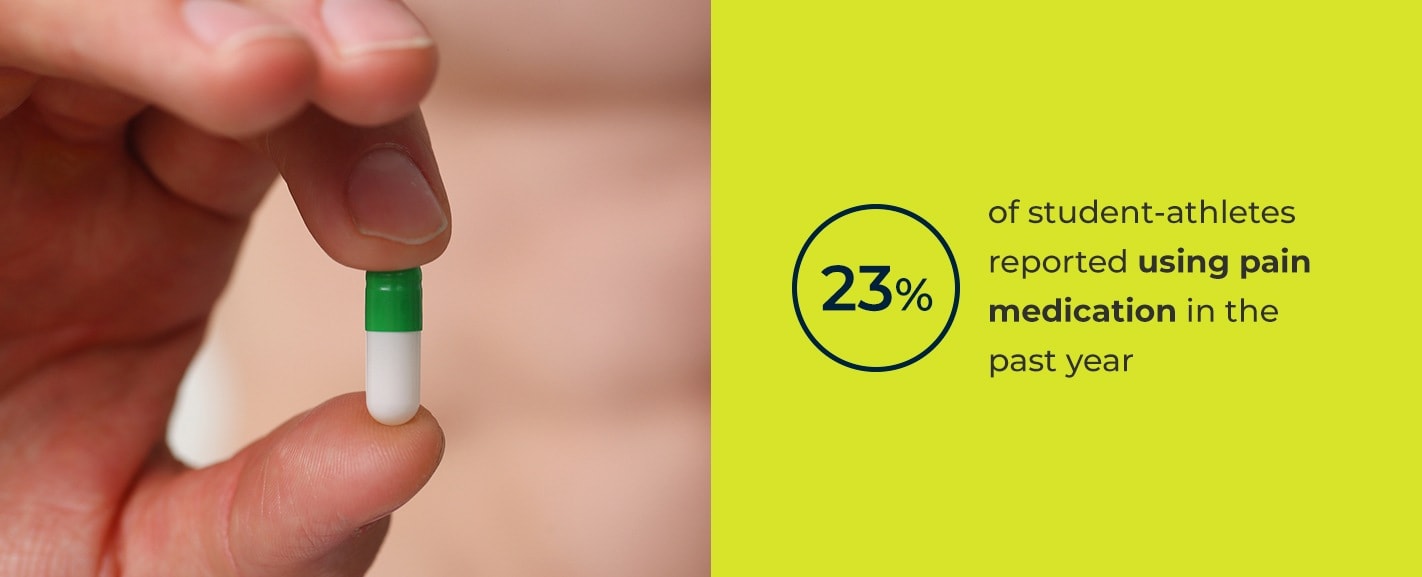
Individuals who abuse anabolic steroids at some point during their life are more likely to turn to other drugs. One study looked at individuals admitted to an inpatient treatment facility for opioid addictions. Nearly 10% of them claimed they abused anabolic steroids earlier in their life.
Addiction Following Sports Injuries
Injury is an expected part of sports. Whether it’s a high-impact contact team sport or a solo sport like gymnastics, pushing the body to its limits always comes with a risk of severe injury. The most common sports injuries include:
- Sprains and strains
- Knee injuries
- Swollen muscles
- Achilles tendon injuries
- Rotator cuff injuries
- Fractures
- Dislocations
Athletes at all levels and of all ages are susceptible to injury, and the treatment method for those injuries can sharply increase the potential for addiction to prescription painkillers. Opioid drugs like OxyContin® and Vicodin® are powerful medications prescribed to treat moderate to severe pain, such as the kind experienced after a sports injury or surgery to repair said injury.
However, health professionals may also prescribe opioids to treat chronic non-cancer pain, like arthritis or back pain. In either scenario, the possibility of substance abuse in athletes is high. In most cases, the spiral toward addiction starts innocently. An athlete who injures their shoulder, tears their ACL or breaks their leg receives opioid medications for use after surgery, and it does help the pain — but only at first.
The use of prescription opioids for more than a few weeks leads to tolerance and potential addiction. When an athlete builds up a tolerance to a medication, they start to need more and more of the substance to receive the same level of pain-relief effects. Tolerance escalates to dependence with repeated use of the drug, which causes neurons in the brain to adapt to the presence of the drug and makes it impossible to function normally without the substance.
When an athlete enters a state of full-fledged addiction, they are in the grip of a chronic disease that leads to compulsive drug-seeking behavior, continued use despite health consequences and long-term changes to brain structure and function. Prescription opioids provide a particularly slippery slope, as addiction to them can quickly lead to athletes turning to cheaper illicit opioids such as heroin. About 80% of people who use heroin used and abused prescription opioids first.
Seeking appropriate treatment for addiction is the only way to stop the unhealthy cycle that ruins lives and careers, yet athletes with drug problems are more reticent than most to seek that help.
Athletes Suffering in Silence
Athletes with drug problems face a dilemma that makes seeking treatment more challenging than for the average person. If they are abusing illicit drugs, revealing they have a problem may lead to drug testing and subsequent punishments for violating the regulations of their sports association.
Alternatively, athletes addicted to painkillers might receive pressure to keep using the drug they’re addicted to. If a hockey player can pop a couple of painkillers and feel enough pain relief to get back to practice ahead of schedule after an injury, coaches and potentially even sports medicine professionals might suggest continued use of the medication. Whether the pressure is overt or more subtle, the underlying question is, “If you can take this legally prescribed drug and feel good enough to play, why wouldn’t you?”
Our culture expects athletes to display mental toughness at all times, and we often view struggles with substance abuse in athletes as antithetical to that expectation. Even though science has made it clear that addiction is a chronic disease of the brain, many people still believe it is a symptom of personal failure or lack of character — especially in the sports world.
Players of team sports may also have to deal with the idea that they’re “letting the team down.” The thought of being absent in practice or missing big games due to pain from an injury may be so distressing that it drives them to ignore their developing tolerance to drugs and take more just to make it onto the field. If they are addicted to another substance like alcohol, athletes may make bad decisions like drinking before a competition to stave off the symptoms of withdrawal. This pressure worsens addictions and leads to athletes staying silent, rather than getting the help they need.
 The Role of Mental Health in Athlete Addiction
The Role of Mental Health in Athlete Addiction
Drug abuse in athletes often has a significant mental health component. Student-athletes who must balance strenuous practices and competitions with academics are particularly vulnerable to mental health issues that can lead to or worsen addiction. Drug use in professional sports has many of the same components.
For example, people with mood or anxiety disorders are twice as likely to struggle with a substance use disorder (SUD), and people with SUDs are about twice as likely as those without to have a mood or anxiety disorder. Here is how the top three mental health conditions can influence addiction in athletes.
1. Anxiety Disorders
Anxiety disorders may be the most common psychiatric issue among athletes. Participation in sports is more likely to produce performance anxiety and panic disorder, as well as phobic anxiety following an injury. While generalized anxiety disorder and obsessive-compulsive disorder are fairly common, they are less likely to have a connection to sports.
It’s easy to imagine the pressures of an upcoming competition and becoming overwhelmed at the thought of specific aspects of performance. Performance anxiety may lead to panic attacks that induce physical symptoms like a racing heart, sweating and shortness of breath. Although anxiety disorders are highly treatable, they may tempt athletes to self-medicate with depressants such as alcohol or benzodiazepines like Xanax®.
2. Depression
Approximately 7% of the U.S. population suffers from depression at one time or another, and athletes are no exception. Although the average onset of depression is around age 22, student-athletes may be more susceptible to the disorder, given their unique burden of juggling so many different types of responsibility. Signs of depression include:
- Depressed mood
- Loss of interest in activities
- Sleep disturbance
- Lack of energy
- Appetite and weight changes
- Impaired concentration
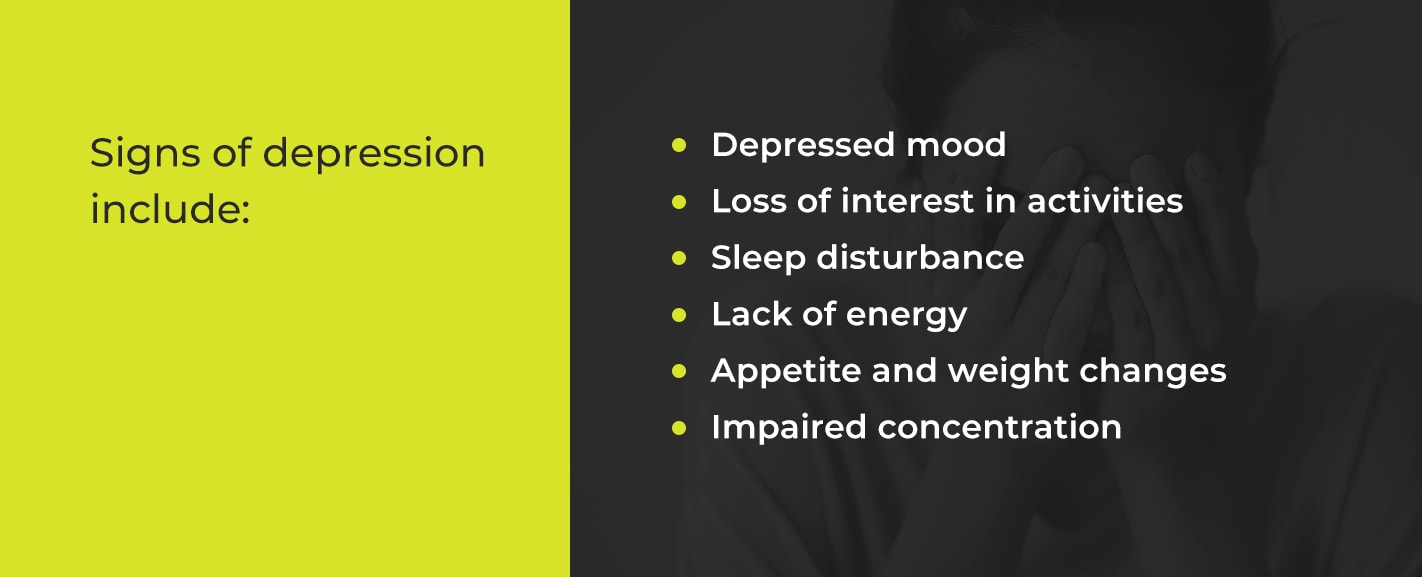
3. Eating Disorders
Given the physical nature of sports, athletes are more vulnerable to eating disorders (ED). They occur in both genders but are more common in women. Athletes in sports where lower body weight and fat percentage translates to better performance or where there are rigid weight classes are also more susceptible to eating disorders. There is limited research on eating disorders in athletes, but one study found 13.5% of athletes had eating disorders, compared to 4.6% of the general population. Gender and type of sport make a significant impact as well:
- 22% of men in antigravitation sports such as those that involve jumping had an ED, compared to 9% in endurance sports and 5% in ball game sports.
- 42% of women in aesthetic sports such as gymnastics had an ED, compared to 24% in endurance sports and 16% in endurance sports.
Eating disorders may lead to the abuse of stimulants, the side effects of which include suppressed appetite and higher energy levels. The drugs used may range from prescriptions to treat ADHD to illegal drugs like methamphetamine. The consequences of their drug use vastly outweigh the perceived performance gain from stimulants. Symptoms include:
- Increased blood pressure and heart rate
- Hyperventilation
- Decreased blood flow
- Increased blood sugar
The relationship of mental health to substance abuse and addiction is close, and it may or may not be causal. Abusing drugs generally makes symptoms of mental illness worse, while the symptoms of mental illness increase the chances that an athlete will turn to substance abuse to self-medicate. Proper treatment is the only way to divert an athlete from a path of addiction that will ruin their career and their life.
Treatment Options for Addicted Athletes
Despite their unique challenges, athletes need to undergo the same recovery process as the rest of us. In many cases, this involves withdrawal management with the use of medication-assisted treatment. In addition to withdrawal management services, athletes can choose between an inpatient, outpatient or partial hospitalization program, depending on their addiction history and severity of the addiction.
- Inpatient: Also known as residential, this form of treatment surrounds athletes with 24/7 care from qualified professionals in a home-like setting where they eat, sleep and live while undergoing full-time addiction treatment.
- Outpatient: These programs involve attending treatment on facility premises a few times a week. There are no accommodations, and patients continue their independent lives at home when not in treatment.
- Partial hospitalization: A partial hospitalization program is similar to attending work or school in that patients live at home, but spend the majority of their days in treatment.
The right treatment for an athlete depends primarily on how long they have been struggling with substance abuse, the substance they are abusing and their history of relapse or lack thereof. Whatever the athete’s lifestyle or goals, there is a treatment program to suit their needs.
 How to Help an Addicted Athlete Seek Treatment
How to Help an Addicted Athlete Seek Treatment
If you know an athlete who is wrestling with addiction, you know the feeling of wanting to help but not being sure of how. You can’t force someone into rehab, but you can take these steps to help a person realize they need rehab.
1. Educate Yourself on Addiction
Initially, the athlete you care about probably knows more about their addiction than you do. If you want to help them get treatment, you need to understand how addiction works and the details of the substance they are using. Doing your research helps the person with addiction take you more seriously, and shows you’re truly interested in helping.
You can find plenty of educational resources online. Try to stick to authoritative resources, such as ones offered by the government, nonprofit organizations and scientific journals.
2. Offer Support
Engaging with treatment can be a frightening prospect, especially for athletes who often have high expectations of themselves and don’t like to accept help from strangers. Offering to give them rides to treatment or even lending a listening ear can encourage an athlete to take the next steps.
An addict may not be ready to get help right away. If they turn down your first offer, let them know they can reach out to talk at any time. Keeping the door open is essential to ensuring the person feels supported.
 3. Gather Resources
3. Gather Resources
One of the most significant barriers to treatment is the person with addiction not knowing where to turn for help. They may not know what effective treatment looks like, or even that it exists in the first place. Compiling a list of resources, like the one provided on the Principles of Drug Addiction Treatment by the National Institute on Drug Abuse, can help prepare them with the knowledge they need to select a quality addiction treatment program.
Write down which programs are available, what services they offer and where they’re located. You can even make a pro and con list to help the decision along.
Treatment for Athletes at Gateway
Athletes and drugs don’t mix. Athletic drug abuse deserves treatment in a program that respects people’s individual needs and works to find the most effective evidence-based methods for each person. Gateway has been providing lifesaving addiction medicine to people of all backgrounds for more than 50 years. With over a million patients treated, we have built up expertise to handle addictions of all types with compassion and efficacy.
If you or someone you care about is suffering the tragic consequences of drug abuse and addiction, you have no time to waste in finding an effective treatment. To find out more about our broad range of addiction programs and services, don’t hesitate to contact Gateway at 877-505-4673 or get in touch through our contact form today.

 Why Athletes Are at Risk for Substance Misuse
Why Athletes Are at Risk for Substance Misuse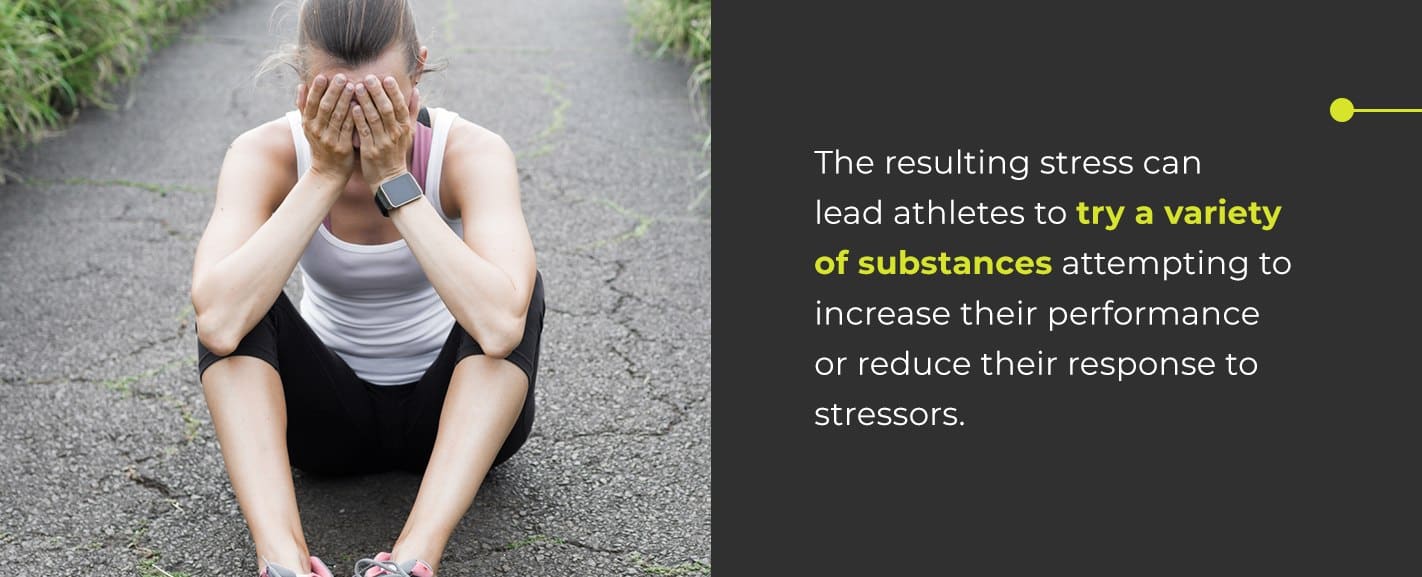

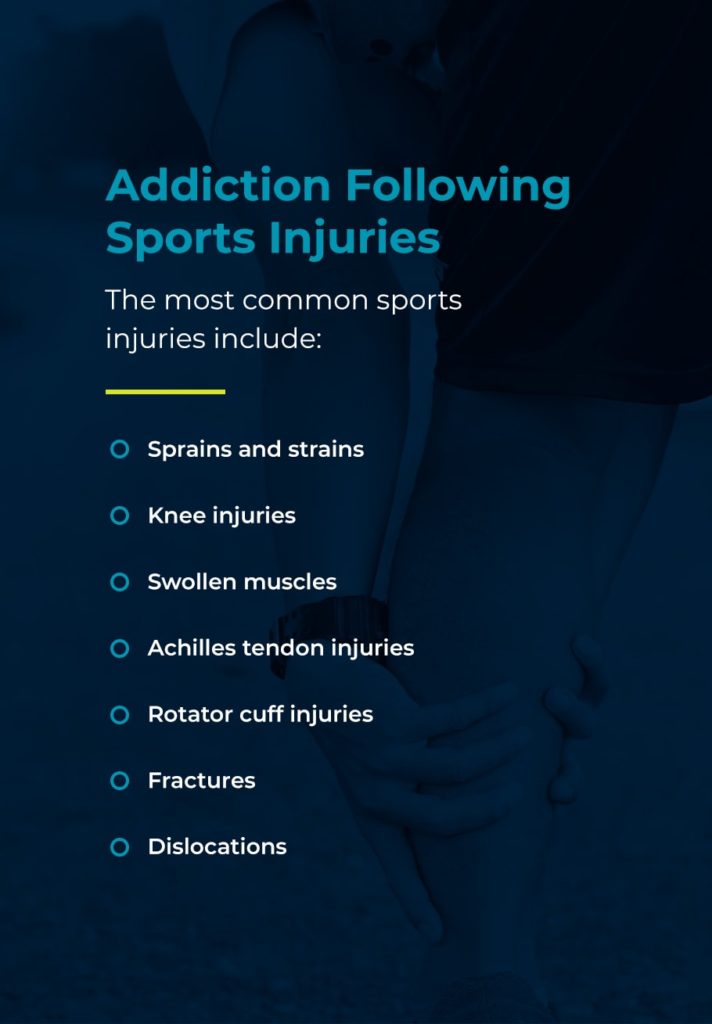
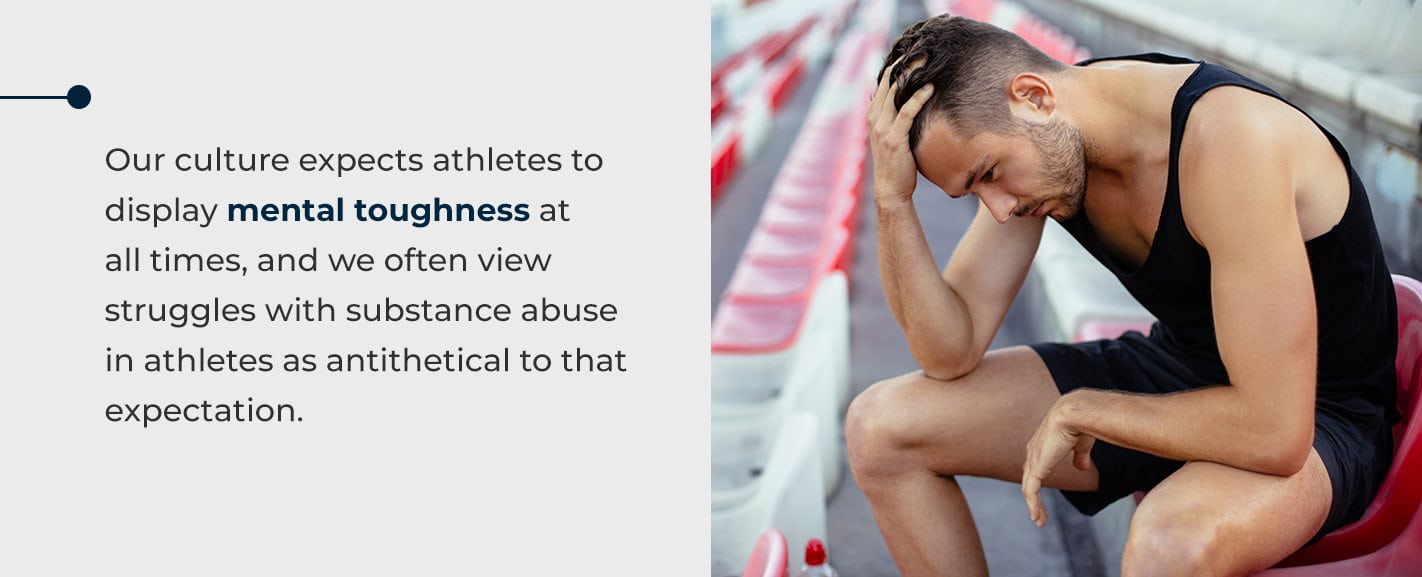 The Role of Mental Health in Athlete Addiction
The Role of Mental Health in Athlete Addiction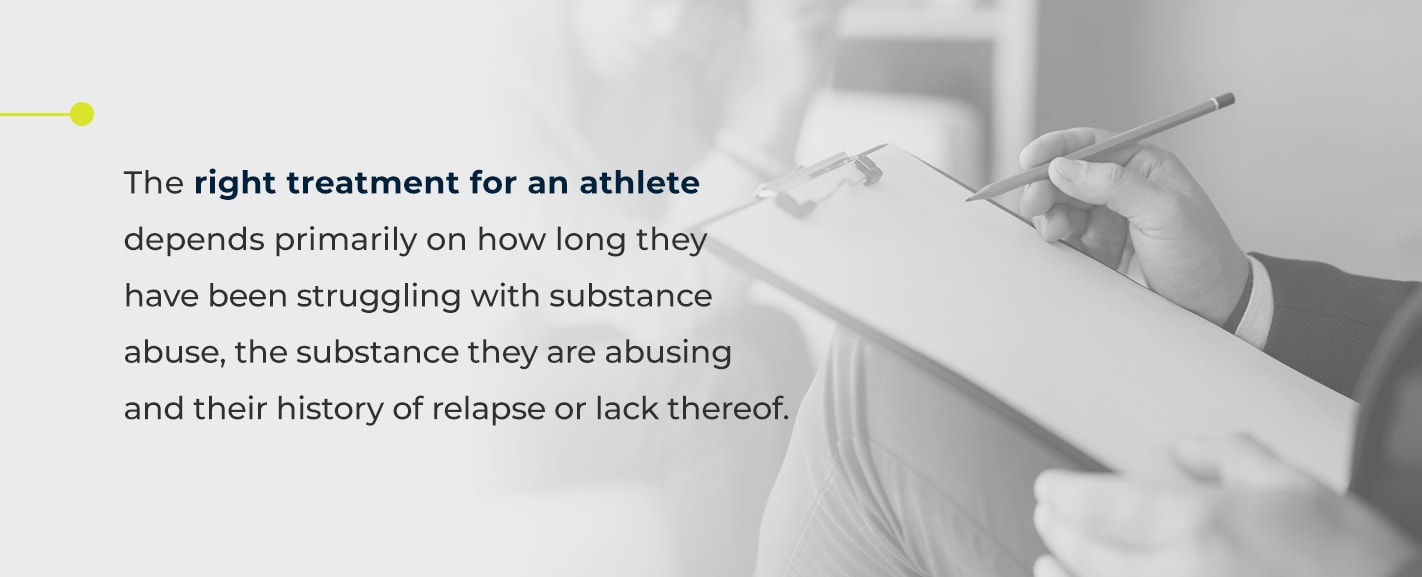 How to Help an Addicted Athlete Seek Treatment
How to Help an Addicted Athlete Seek Treatment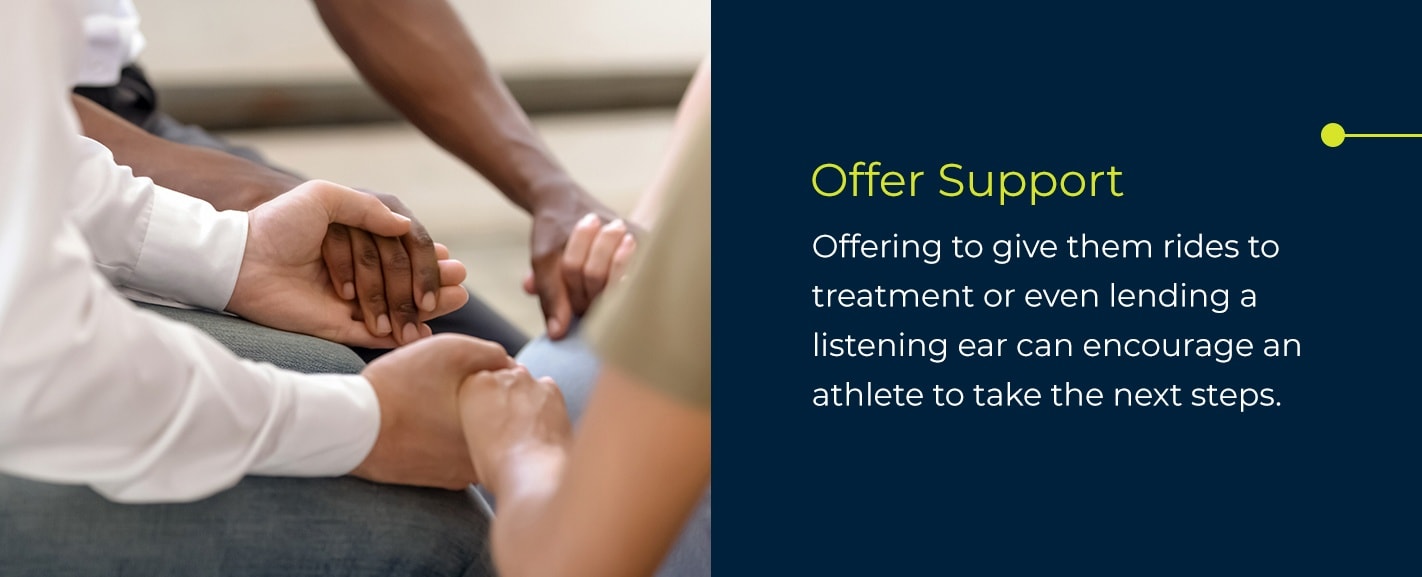 3. Gather Resources
3. Gather Resources

